INGEO, as next step in the service of 3D scanning, has the possibility to offer the reverse engineering service.
Reverse engineering is the process of discovering the technological principles of a device, object or system through analysis of its structure, function and operation.
It often involves taking something (e.g., a mechanical device, electronic component, or software program) apart and analyzing its workings in detail to be used in maintenance, or to try to make a new device or program that does the same thing without copying anything from the original.
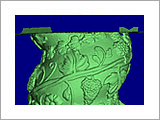 As computer-aided design (CAD) has become more popular, reverse engineering has become a viable method to create a 3D virtual model of an existing physical part for use in 3D CAD, CAM, CAE and other software. As computer-aided design (CAD) has become more popular, reverse engineering has become a viable method to create a 3D virtual model of an existing physical part for use in 3D CAD, CAM, CAE and other software.
The reverse-engineering process involves measuring an object and then reconstructing it as a 3D model. The physical object can be measured using 3D scanning technologies like laser scanners.
The measured data alone, usually represented as a point cloud, lacks topological information and is therefore often processed and modeled into a more usable format such as a triangular-faced mesh, a set of NURBS surfaces or a CAD model.
The point clouds produced by 3D scanners are usually not used directly since they are very large unwieldy data sets, although for simple visualization and measurement in the architecture and construction world, points may suffice.
Most applications instead use polygonal 3D models, NURBS surface models, or editable feature-based CAD models (aka solid modeling). The process of converting a point cloud into a usable 3D model in any of the forms described above is called "modeling".
Reasons for Reverse Engineering
| • |
Interoperability; |
| • |
Lost documentation: Reverse engineering often is done because the documentation of a particular device has been lost (or was never written), and the person who built it is no longer available. Integrated circuits often seem to have been designed on obsolete, proprietary systems, which means that the only way to incorporate the functionality into new technology is to reverse-engineer the existing chip and then re-design it; |
| • |
Product analysis. To examine how a product works, what components it consists of, estimate costs, and identify potential patent infringement; |
| • |
Digital update/correction. To update the digital version (e.g. CAD model) of an object to match an "as-built" condition; |
| • |
Security auditing; |
| • |
Academic/learning purposes; |
| • |
Competitive technical intelligence (understand what your competitor is actually doing versus what they say they are doing); |
| • |
Learning: learn from others' mistakes. Do not make the same mistakes that others have already made and subsequently corrected. |
The cycle of Reverse Engineering
To reconstruct the 3D geometry of an object you must follow four phases.
The starting point for the process of building the model is the acquisition of points clouds, ie points in space from the solid surface.
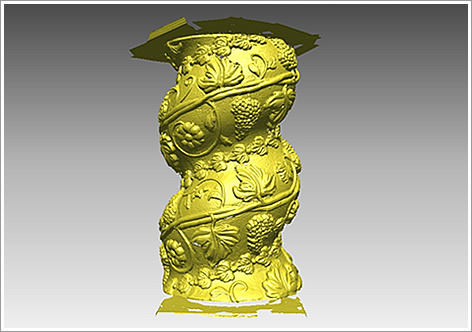 |
| Rendered solid model created by the 3D scanning |
Subsequently a set of primitives that approximate the CAD solid can be extract in automatic or semiautomatic mode.
The file containing the information obtained through the survey will have to be optimized through appropriate filters. Only in a second time the points cloud can be converted into a neutral format (IGES, VDA, STEP, ...) or imported directly into the software used for 3D modeling.
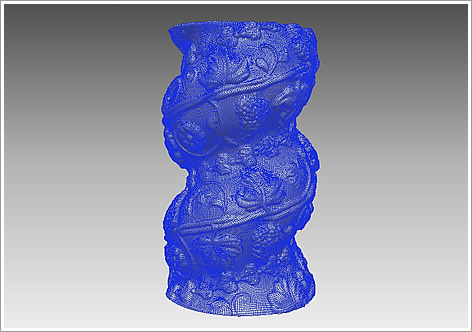 |
| Column model with surfaces ready for the generation of solid |
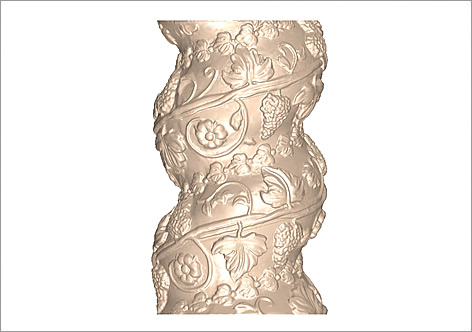 |
| Model column solid ready for separation into workable pieces |
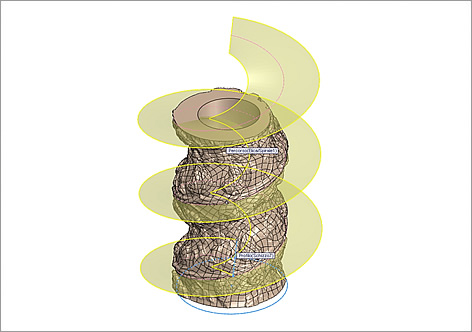 |
| Example of a spiral cut made into the solid model |
From the mathematical model developed, it could be possible to generate STL models to send to prototyping systems, to generate graphical formats for further processing (rendering), or to generate the acquired forms database or to make 3D modeling.
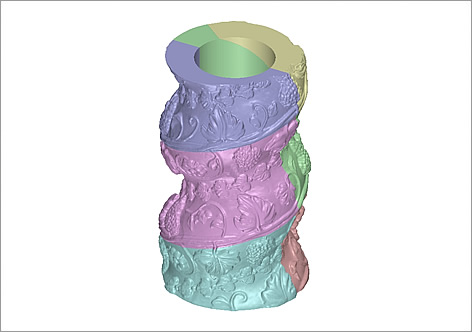 |
| Column solid separates in some pieces workable to the machine tool, laser systems, waterjet or rapid prototyping |
For further informations about Reverse engineering, please contact PhD Luigi Paracchini, phone number +39 0321 921654 (during office hours), or send an email to info@ingeosnc.it
|